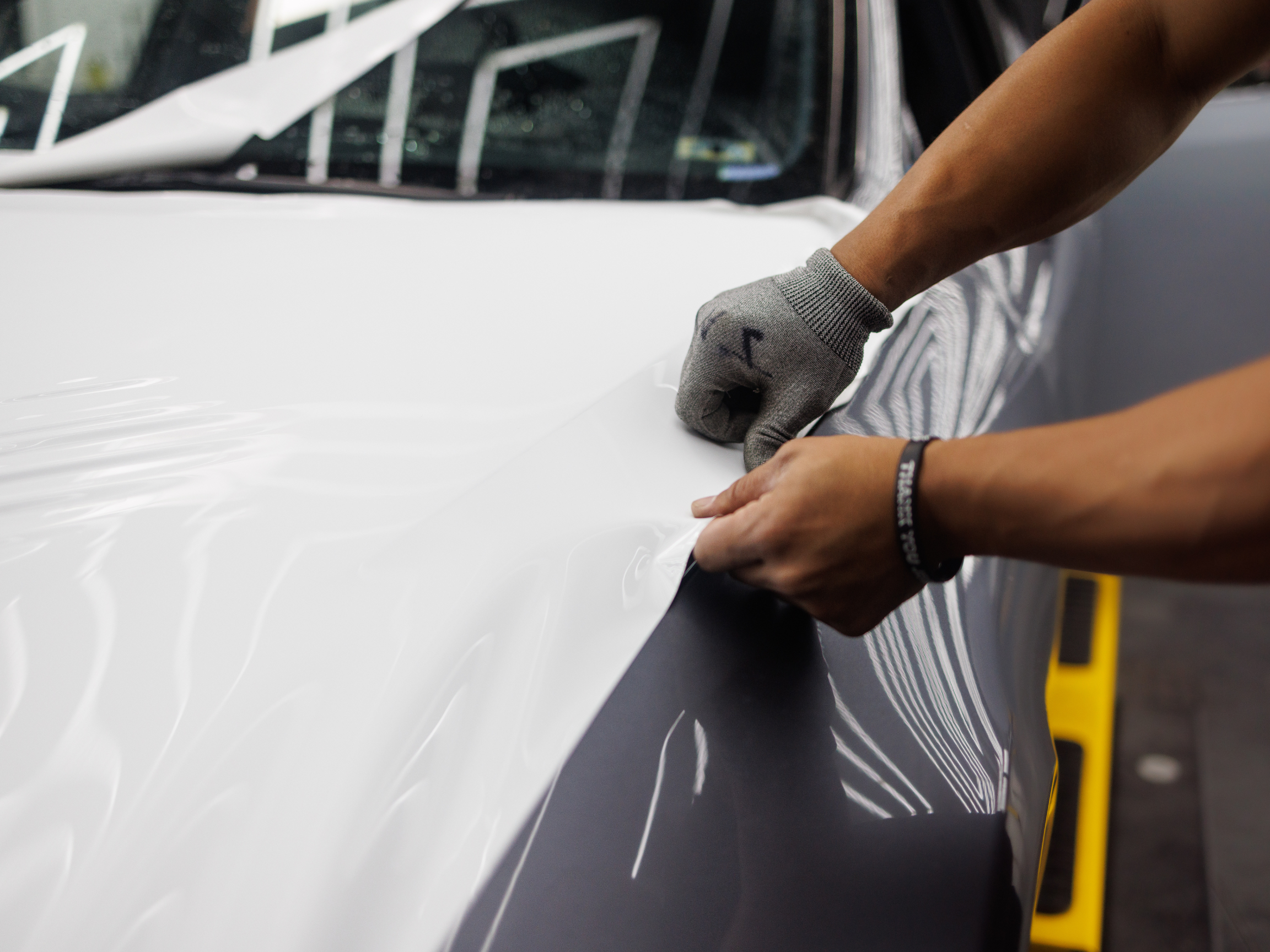Car Wrapping vs. Paint – Which Is Better?
Comparing Full and Partial Car Wrap Options
Whether you're looking to refresh your vehicle’s appearance, promote a business, or protect your original paint, the decision between car wrapping and traditional paintwork is an important one. Both options offer unique benefits, but with the growing popularity of vinyl wraps, particularly the partial car wrap, many drivers are rethinking how they approach vehicle customisation.
In this guide, we’ll break down the key differences between wrapping and painting and help you determine which option is better suited for your goals, budget, and lifestyle.
What Is a Car Wrap?
A car wrap is a flexible vinyl film carefully applied over your vehicle’s existing paint to alter its appearance or add protection. It’s available in a variety of colours, finishes, and textures, including gloss, matte, satin, and chrome, to suit different styles and preferences. Wraps can either cover the entire vehicle or just specific parts of it, known as a partial car wrap.
A partial wrap typically covers selected sections such as the bonnet, roof, boot, side mirrors, or door panels. This allows drivers to achieve a custom look without the expense of a full-body wrap or respray.
What Is a Car Respray?
A car respray involves sanding down the existing paint, preparing the surface, and applying new coats of automotive paint. This process is permanent and is usually carried out in a controlled spray booth. Paint offers a long-lasting finish and is ideal for restoring faded or damaged bodywork, or for those wanting a complete, factory-style appearance.
Appearance and Customisation
Car wraps provide greater versatility when it comes to design options. You can choose from hundreds of colours, textures, and effects. Custom graphics, business branding, or two-tone designs are much easier to achieve with wrapping. For those interested in subtle enhancements, a partial car wrap allows just enough visual change without going over the top.
Paint is more limited in terms of finish unless you opt for costly custom paintwork. However, when done professionally, a respray provides a high-gloss, flawless surface that can rival a brand-new car's appearance.
Cost Comparison
Cost is a major deciding factor for many drivers. A full respray can cost anywhere from $5,000 to $15,000, depending on the colour, finish, and size of the vehicle. In contrast, a full car wrap generally ranges from $2,500 to $5,000.
If you're considering a partial car wrap, the cost is significantly lower, typically starting around $500 to $1,50,0, depending on the area being wrapped and the complexity of the design. This makes partial wraps an affordable way to refresh or personalise your car without committing to a full transformation.
Durability and Maintenance
Paint is durable and permanent, but can be expensive to repair if scratched, chipped, or faded. It also requires regular polishing and care to maintain its shine. Depending on the quality of paint and how the car is used, it can last a decade or more.
Vinyl wraps, on the other hand, typically last 3 to 7 years. While not as long-lasting as paint, they provide added protection to the underlying surface. Wraps are also easy to clean and don’t require waxing. If a section gets damaged, it can often be replaced without redoing the entire vehicle, especially if you've opted for a partial car wrap.
Time and Installation
A respray can take up to two weeks, depending on the prep work, paint layers, and drying time. The vehicle typically remains out of service throughout this time.
Car wrapping, including partial wraps, is a much faster process, typically taking just 1 to 3 days. This makes it ideal for business fleets, seasonal promotions, or individuals who want a new look without a long wait.
Reversibility and Resale Value
A key benefit of vinyl wraps is that they can be removed without permanently altering the vehicle. If you decide to return to the original look or sell the car, the wrap can be removed without damaging the paint (if properly installed and removed). This helps preserve the vehicle’s resale value, especially if the original paint remains in good condition underneath.
Paint, once applied, is permanent. Any colour changes will stay with the car unless you repaint it, which can further increase long-term costs.
Why a Partial Car Wrap Is a Smart Middle Ground
For many car owners, a partial car wrap offers the ideal balance between customisation, cost, and practicality. It allows you to change the look of your vehicle, protect specific areas of paint, and do so without committing to a full respray or wrap. Whether you're experimenting with a new style, highlighting certain features, or promoting your brand, a partial wrap gives you the flexibility to update your car on your terms.
If you're looking to refresh your vehicle's look without the high cost or permanence of a full respray, consider the many benefits of a partial car wrap. It could be the smarter choice for both style and savings.


